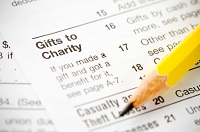Last week, the House Ways and Means Committee held a hearing on the charitable deduction. About 40 individuals, including the President and CEO of United Way Worldwide and the President of the Council on Foundations, provided testimony at the hearing.
Unsurprisingly, most who testified are adamantly opposed to proposals that would limit the charitable deduction. “Don’t be fooled into thinking that limiting the deduction will only impact wealthy taxpayers,” Brian Gallagher, United Way Worldwide president and CEO, said during his statement. “If the deduction is reduced, expect donors to withhold the difference necessary to cover the tax from their donations.”
However, other ideas were floated during the hearing, including some on how to further incentivize charitable giving. For example, C. Eugene Steuerle of the Urban Institute advocated for the following:
- allowing taxpayers to have until April 15 or the filing of a tax return to make deductible charitable contributions;
- extending the deduction to taxpayers who do not itemize;
- raising and simplifying the ceiling on allowed charitable giving for some types of gifts (i.e., no longer having separate ceiling amounts for private foundations); and
- changing (if not eliminating) the foundation excise tax (which he argues discourages current payouts for charitable purposes).
Diana Aviv of Independent Sector advocated for permanent extensions to charitable giving incentives included in the annual tax extenders package, including:
- IRA charitable rollover to a qualifying public charity without the taxpayer incurring tax on the withdrawal;
- enhanced deduction for contributions of food inventory; and
- enhanced deduction for conservations easements.
Some testimony touched on ideas to reform the charitable deduction that may be more palatable to organizations than proposals like limiting a taxpayer’s marginal rate. For example, some discussed the idea of a floor below which no deduction for giving could be taken. Also, several spoke of potential reforms around non-cash contributions, which can be more easily abused. For example, Roger Colinvaux of the Catholic University of America, spoke of the complexity in the rules that address different non-cash contributions. He concludes in part that “many of the costs associated with present law relate to supporting the deduction for noncash property, which provides uncertain benefits.” In addition, the Urban Institute’s Steurerle noted that IRS data for 2010 listed donations of clothes and household items as the largest category of donations after corporate stock, and that because many intermediaries often operate in this areas, charities often get little value relative to the revenue loss by the government.
Click here for the information and testimony of all speakers, and here for video of the testimony.


